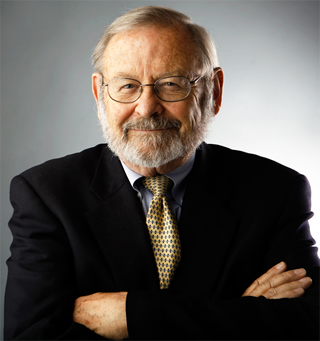Grudge City - Page 6
 |
|
|
In fact, modern architecture in both Californias is more alike than it is different. Northern California had its share of International Style modernists, and Southern California had architects whose work would sit well beneath the live oaks in the Berkeley Hills.
And developer Joe Eichler turned to architect teams from both parts of the state to design his modern tract homes, Anshen and Allen from San Francisco, and Jones & Emmons from Los Angeles.
Ray Kappe, who studied architecture at UC Berkeley and worked for Anshen and Allen before moving to Los Angeles, says designs were similar both in north and south through the 1950s, though up north the style could be more “laid back.”
“For one period Bay Area architects used a lot of shingles,” Kappe says.” They didn’t use that material down here at all.”
“There was more of a simplicity to what people did up there,” he says about design in the Bay Area. “[Joe] Esherick’s houses are all really, really nice, but they didn’t push the edge a lot. And [William] Wurster, he didn’t push the edge.”
 |
 |
|
|
Kappe’s residential designs, varied as they are, can sometimes come across as something from the North transplanted to the south, thanks to their woodsy style blended with the landscape.
“I’m not sure if that’s because I was in the Bay Area that I’m more sympathetic to that kind of work,” he says, noting also the influence of Southern California Arts & Crafts designers Greene and Greene and modern architect Harwell Harris.
Kappe also attributes the different look to the place and the clientele.
“There was more opportunity here [in Los Angeles] in many ways. San Francisco was pretty much an established city, and L.A. was always in flux and growing. The clientele down here was a little less conservative.”
“They’re a little more flamboyant than they are in the Bay Area,” he says.
Alan Hess, who in his recent writing has celebrated the suburbs as a progressive force in American society, says, “There are a lot more things in common between northern and southern California than we generally admit—especially than Northern Californians like to admit—especially the suburban lifestyle.
“Northern California, the Peninsula, San Jose were as innovative as Southern California” in creating the modern suburb, he says, citing Eichler homes, the area’s research campuses and shopping centers, and Sunset magazine, based in Menlo Park. “Sunset really did a lot to popularize that idea of the California suburban lifestyle.”
“I do think there’s a commonality between Northern and Southern California that has to do with innovation and experimentation and letting people try new things,” adds Hess.
“We’re all Californians and we should stick together. We have more in common than differences, I think.”
Photos: Mike Kepka, Scott Abbott, Carrie Swing, Randolph R. Ruiz of AAA Architecture; and courtesy the San Francisco Chronicle and the Rico Tee Archive
Illustrations: Sandow Birk from the book In Smog and Thunder: Historical Works from The Great War of the Californias (Laguna Art Museum-Last Gasp)




